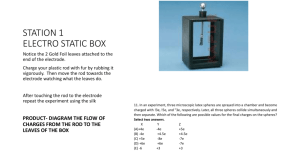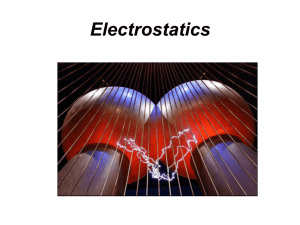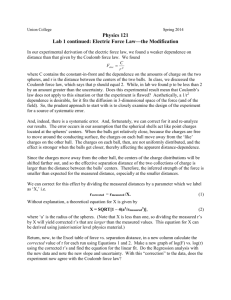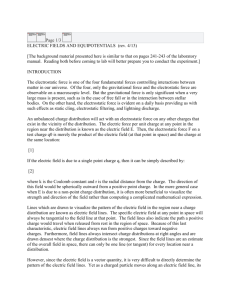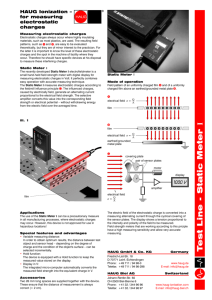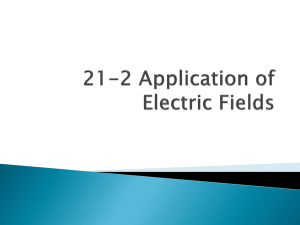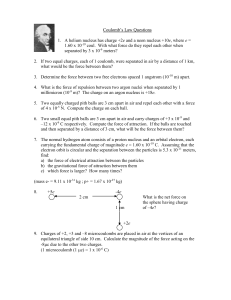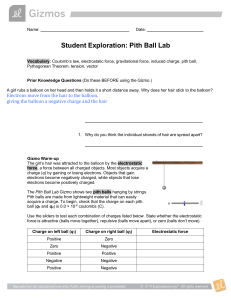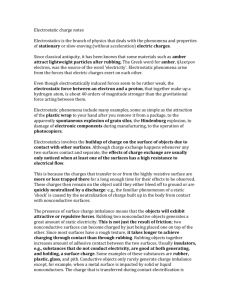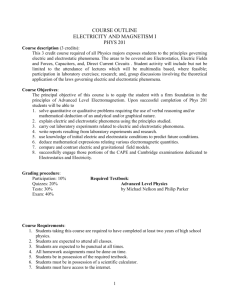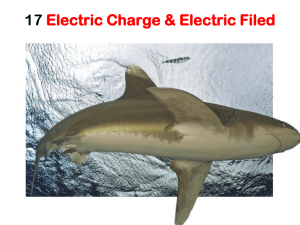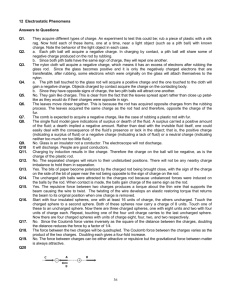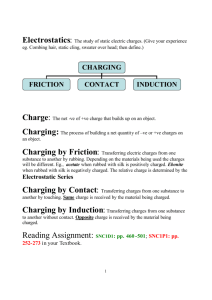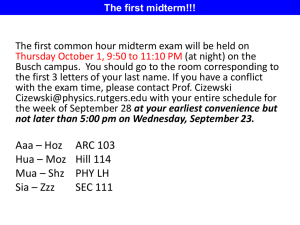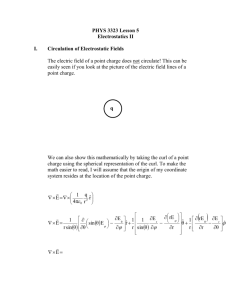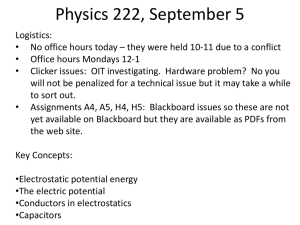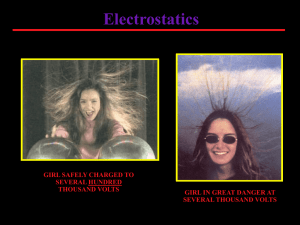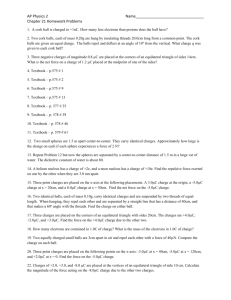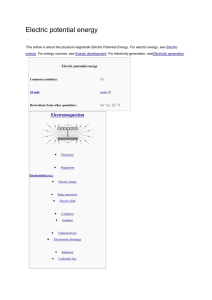Electrostatics - curtehrenstrom.com
advertisement
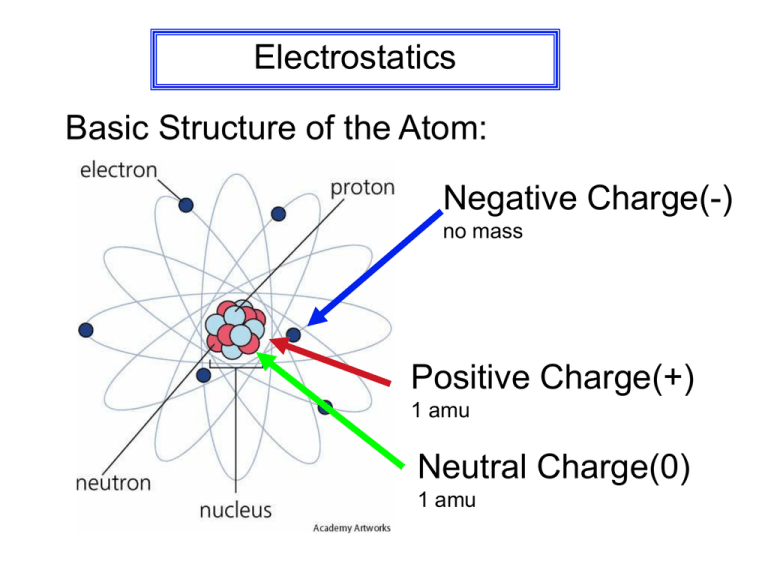
Electrostatics Basic Structure of the Atom: Negative Charge(-) no mass Positive Charge(+) 1 amu Neutral Charge(0) 1 amu Electrostatics: Electrical charges at rest Law of Electrostatics: Like charges repel, Unlike charges attract Conductors: Free electrons allow conduction of charge emetal + + + + + + + + + + + + Insulators (non-Conductors): Tightly bound electrons do not conduct charge readily wood + + + + + + No electron transfer! Semi-Conductors: Silicon and Carbon, among others that fall in between good conductor and good insulators. Often used in computer chips and other electronics. Electroscope: Device used for detecting charges: + + + - - - Coloumb’s Law: Electric Charge (Q) exerts a force that depends directly on the charges and inversely on the distance between the charges! Charge is determined by the surplus or deficiency of electrons in relation to protons and is measured in coloumbs (C) 1 C = 6.25 X 1018 electrons This is a lot of charge-- most charges are measured in microcoloumbs (µC) 1 µC = 10-6 C Coloumb’s Law: F= kQ1Q2 r2 k = 9 X 109 N m 2/C2 this value is for charges separated by air Demo’s An electrostatic charge of 60.0 µC exerts a force of 175 N on a charge of 50.0 µC. How far apart are the charges? Q1 = 60.0 µC Q2 = 50.0 µC r= kQ1Q2 F F = 175 N r=? = (9 x 109 N m 2/C2)(60.0 x 10-6 C)(50.0 x 10-6 C) 175 N = .391 m Electric Field and Electric Field Intensity Lines of Force q m q q q Gravitational Field Electric Field Electric Field Lines of Force: Electric Field Intensity (E): Force that acts on a small test charge (+) in the field F E= q Units: N/C 1) Calculate the electrostatic force acting on a proton and an electron that are 1.00 x 10-10 m apart. 2) A pith ball with a charge of 6.0 µC is placed 12 cm from a second ball that is charged -4.3 µC. A) Find the magnitude of the force between them. B) Explain if this is a force of attraction or repulsion. 3) Two pith balls are charged and separate so that the angle between their threads is 20.0˚. If the mass of each ball is .15 g, what electrostatic force is acting on each ball? (FBD!) 4) If the threads in the previous problem are 15.0 cm long, a) how far apart are the pith balls and b) what is the magnitude of the charge acting on the pith balls? 5) An object with a charge of 12.3 µC is acted upon by a force of 6.4 N when placed in an electric field. What is the field’s intensity at this point? 6) An electron moving through an electric field experiences an acceleration of 6.3 x 103 m/s2. A) How much electrostatic force is acting on it? B) What is the electric field intensity? Two pith balls are equally charged and separate so that the strings they hang from form an angle of 20.0˚. If the strings are 15.0 cm long, and the electrostatic charge on each ball is +0.100 µC, what must be the electrostatic force acting on each? k = 9 X 109 Nm2/C2
